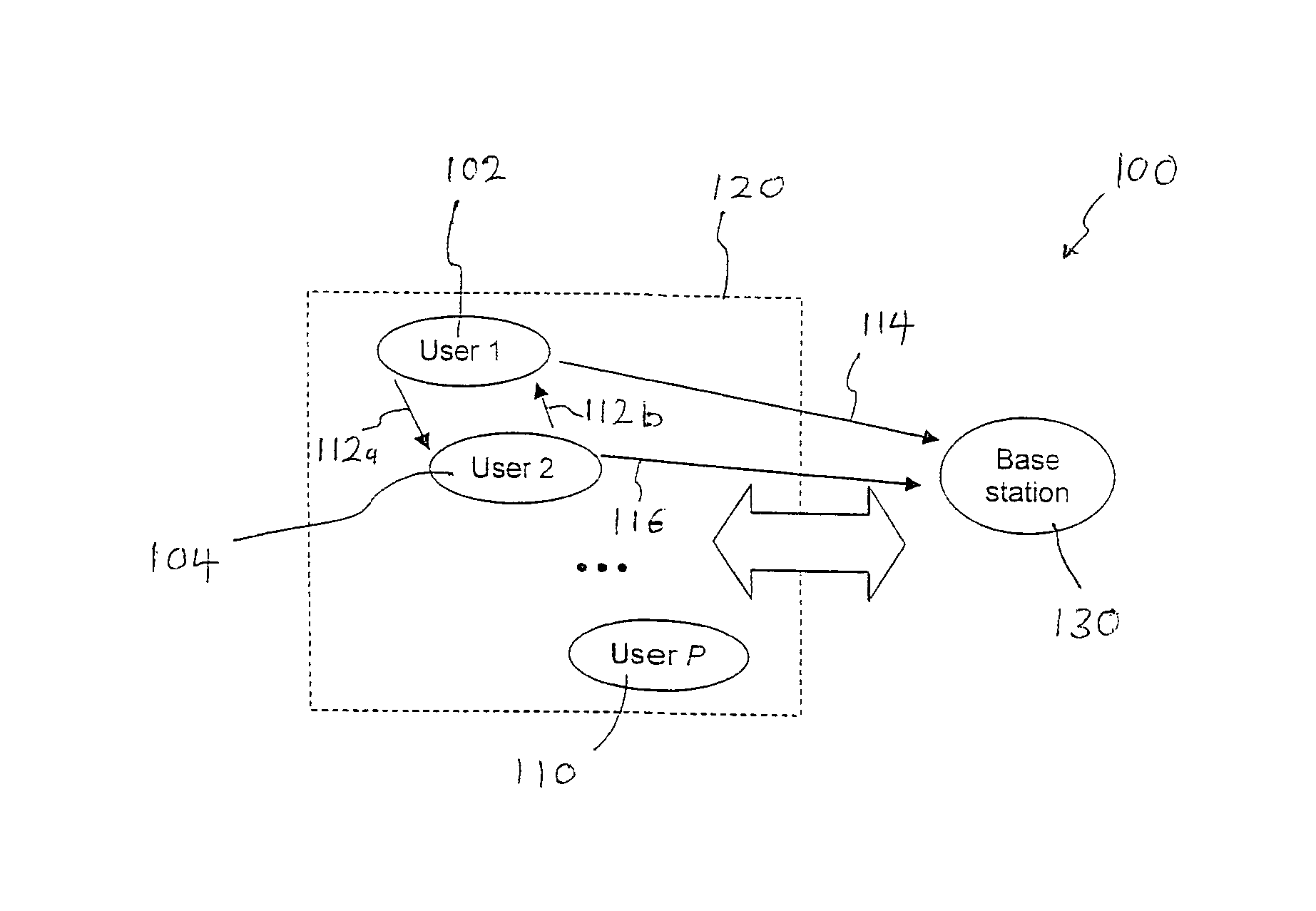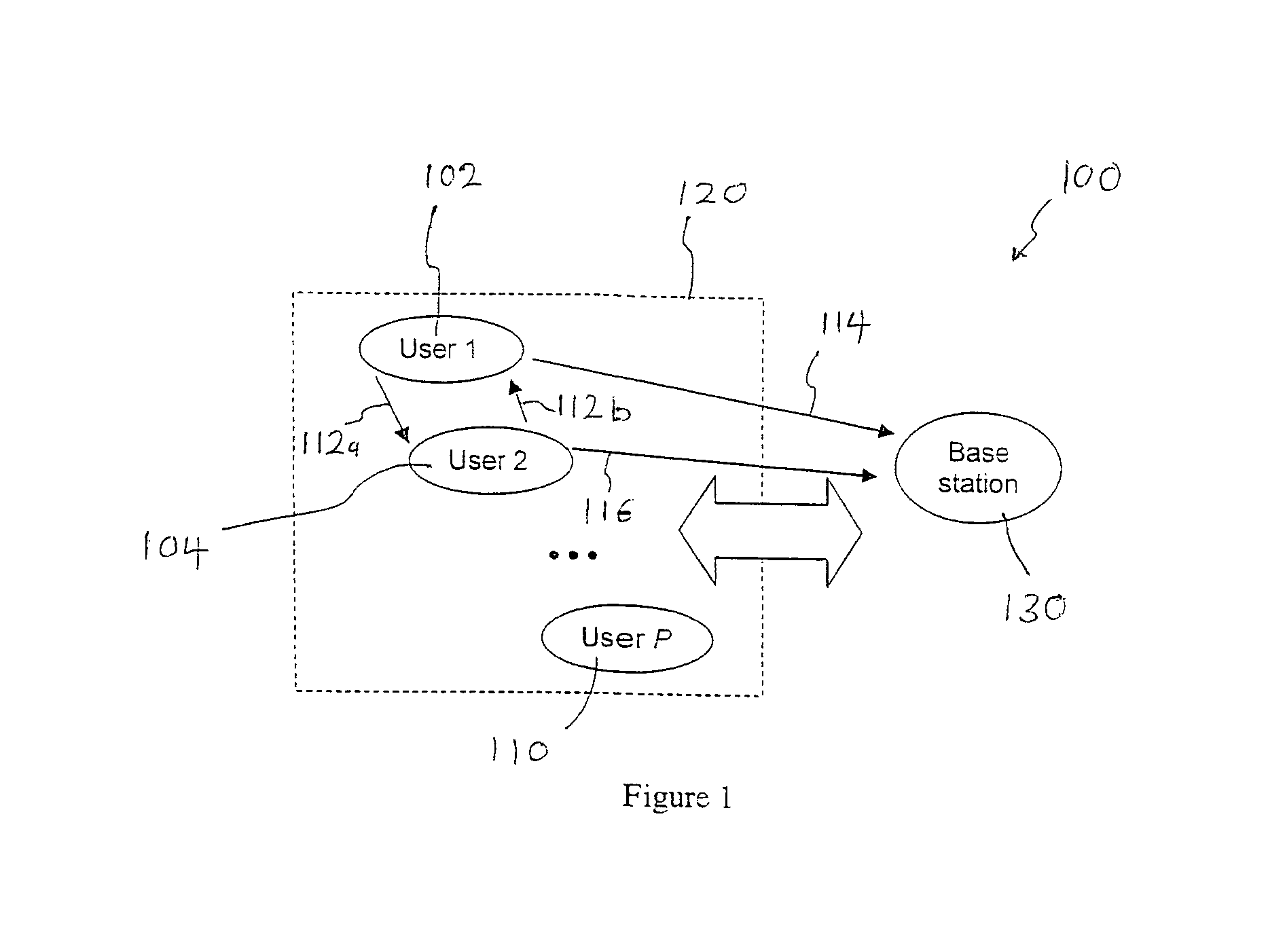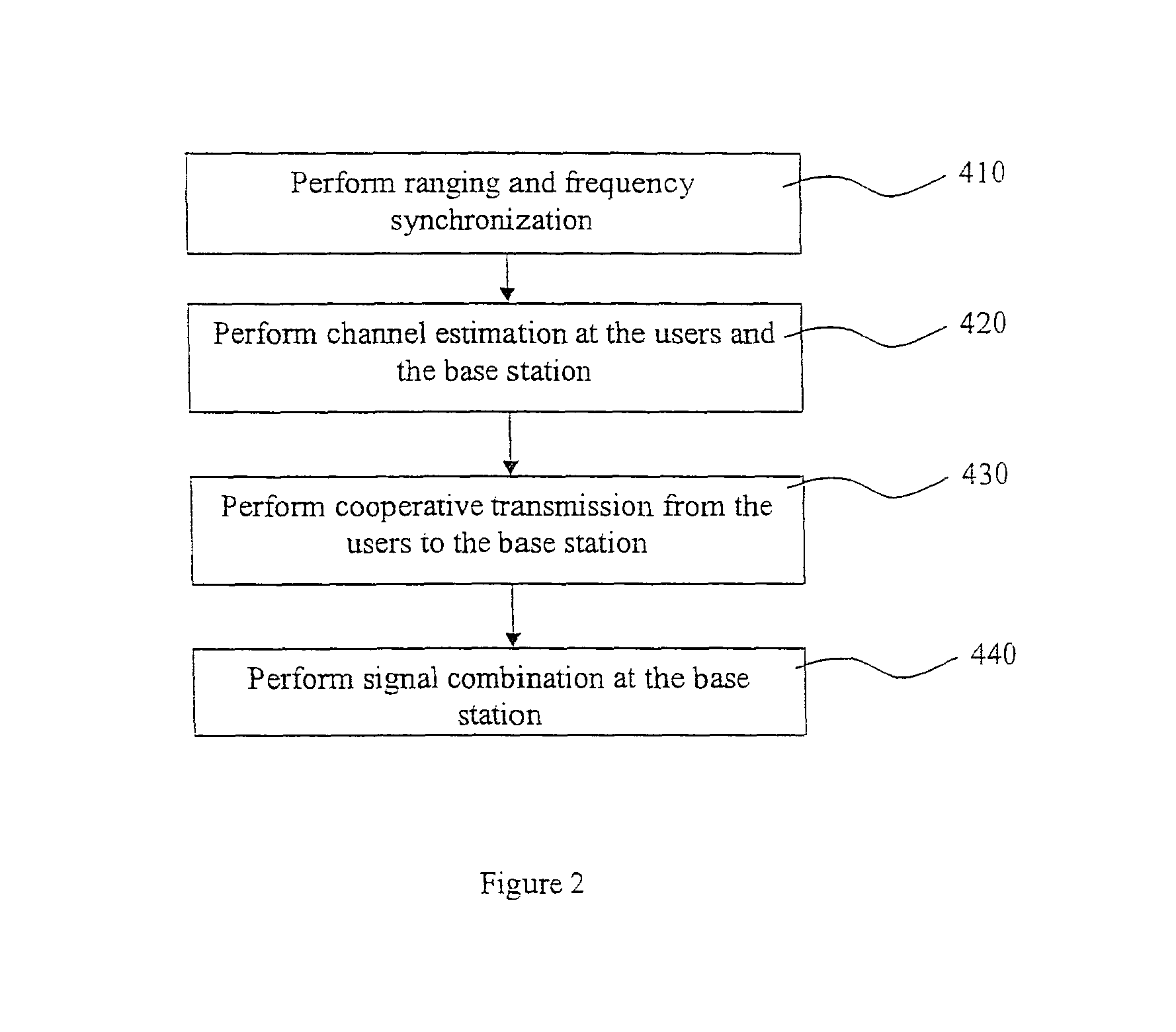Cooperative communication methods and devices
a communication method and communication method technology, applied in the field of cooperative communication methods, can solve the problems of deep faded reception signal at the destination, and no diversity available to reliably recover transmitted signals
- Summary
- Abstract
- Description
- Claims
- Application Information
AI Technical Summary
Benefits of technology
Problems solved by technology
Method used
Image
Examples
Embodiment Construction
[0082]A wireless communication network 100 is shown in FIG. 1 and in this embodiment, the network is a cellular network. The network 100 comprises a group 120 of P users 102, 104 . . . 110 where P is any number of users, and a base station 130. In this embodiment, all the users 102, 104 . . . 110 are in the same group 120, share a same frequency band and each user has a single antenna for transmission or reception. As a result, TDMA is used for multiple access of the base station 130 by the users 102, 140 . . . 110. However, such a multiple access scheme is not ideal as it does not achieve diversity and signal reliability is poor.
[0083]Each user 102, 104 . . . 110 is a mobile communications device associated with a user and examples of a mobile communication device may include a mobile phone, notebook computer, GPS (Global Positioning Systems) etc operating within the network 100.
[0084]To achieve diversity, it is proposed that the users cooperate to increase their signal reliability...
PUM
 Login to View More
Login to View More Abstract
Description
Claims
Application Information
 Login to View More
Login to View More - R&D
- Intellectual Property
- Life Sciences
- Materials
- Tech Scout
- Unparalleled Data Quality
- Higher Quality Content
- 60% Fewer Hallucinations
Browse by: Latest US Patents, China's latest patents, Technical Efficacy Thesaurus, Application Domain, Technology Topic, Popular Technical Reports.
© 2025 PatSnap. All rights reserved.Legal|Privacy policy|Modern Slavery Act Transparency Statement|Sitemap|About US| Contact US: help@patsnap.com



